|
December 17, 2020
You’ve probably heard of a volcanic eruption, but have you heard of a bird irruption?
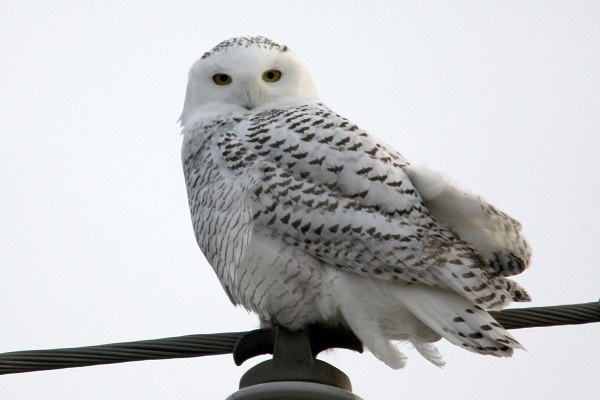 Photo by Doug Harr. In past years, Iowa has seen larger numbers than expected of snowy owls.
Opposite to an eruption, a sudden outbreak, an irruption is a sudden or forceful entry. When we talk about birds irrupting in North America, we are often talking about birds from the boreal forest or tundra in the North, suddenly appearing in high numbers farther south into the United States. Bird irruptions often take place in fall and winter, and are caused by a lack of food resources in the North. Irruptions of winter finches are often associated with low production years of pine and spruce cones across Canada. Irruptions of Snowy Owls occur when rodent prey, especially lemmings and voles, are in short supply. High and low years of resources occur in cycles, and therefore so do winter bird irruptions, and this year, many winter bird species are irrupting across the United States, including in Iowa.
Opposite to an eruption, a sudden outbreak, an irruption is a sudden or forceful entry.
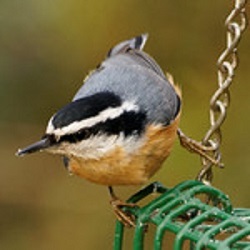
In late August, the first irrupting species arrived, with many people reporting Red-breasted Nuthatches throughout the state and the region. Although this species is seen in Iowa most winters, the number of Red-breasted Nuthatches in the state this fall and winter has been higher than usual. Low cone crops in the eastern boreal forest caused this species to move south looking for food. I found my first Red-breasted Nuthatch on August 18th and have heard and seen them regularly since.
|
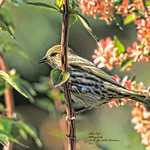
The next species to arrive was the Pine Siskin. This species is seen in Iowa in low numbers every winter, but Pine Siskins have been reported a bit more often this year. I found my first pine siskin on October 3rd and have been hearing regular reports at feeders since. Pine siskins also rely on cone crops in the boreal forest, and good cone numbers in western Canada are keeping many pine siskins there this winter.
|
The showiest irrupting bird to visit Iowa this year was the brilliant yellow Evening Grosbeak. This species is an extra special treat because it does not visit Iowa every winter. The population of Evening Grosbeaks in Eastern Canada has been increasing over the last few years because of high rates of spruce budworm, which they eat in summer. A larger population experiences increased competition for winter food (seeds and berries), especially in a year with low cone production, forcing Evening Grosbeaks to travel south to find food. Evening Grosbeaks were seen in small numbers across eastern and central Iowa, in late October and November 2020, and a few individuals have been reported into December.
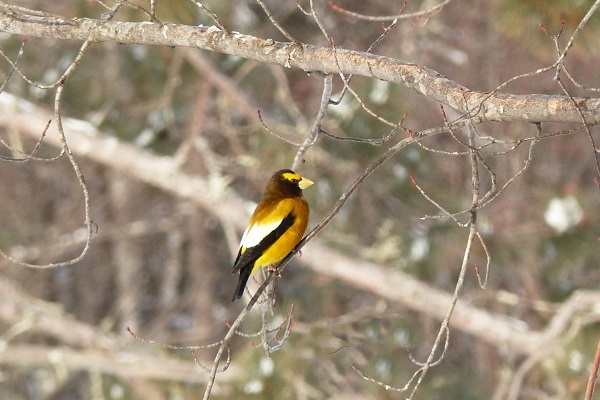 Photo by Tyler Harms. The showy Evening Grosbeak.
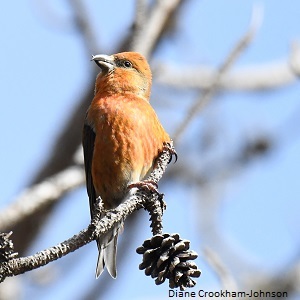
Another group of birds that can be considered irruptive in nature are the Crossbills. Crossbills get their name from their unique bill shape which is adapted for prying seeds from pine and spruce cones. A small number of Red Crossbills breed in Iowa each year but the White-winged Crossbill does not breed in Iowa. Both Red Crossbills and White-winged Crossbills are seen in low numbers in Iowa each winter, but in irruption years, like 2020, they become more numerous in Iowa. This year both species have been reported in the state, and more may appear as the winter continues.
|
Although there are several other species that are considered irruptive in some years, like Common Redpoll and Purple Finch, the last species I’ll highlight is the Snowy Owl. Although this year does not appear to be a Snowy Owl irruption year, several Snowy Owls has been seen in Iowa so far this winter. When snowy owls do irrupt, they are often found in wide open spaces like harvested fields and airports, which are similar to the barren Tundra habitat they use for breeding.
Although there are fewer bird species present in winter, interesting and unusual birds can be seen in Iowa all year! Keep an eye out this winter for irrupting finches, especially at pine and spruce trees with lots of cones, and bird feeders with black oil sunflower or thistle seeds.
Check out this website for the winter finch forecast!
|